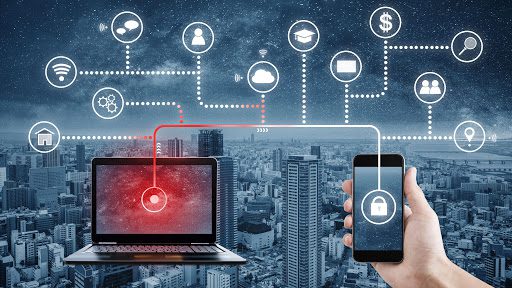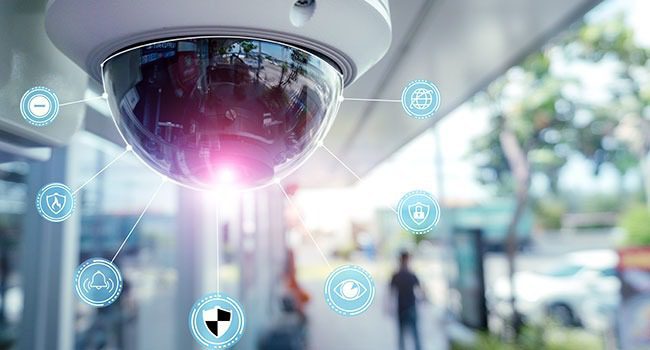
With the evolution of mankind, everything in contact with us is also changing at a fast pace. Revolutionary inventions have paved our way toward an efficient and effective future. 5G is one such revolution that is bound to impact tech advancement and innovation to great lengths. It will change the entire landscape of the tech industry. It holds immense promise to developing technologies and has the potential to show effective progress focused on mobile data improvement.
However, speed is not the only factor that should be taken into consideration before we switch to this revolution. We also need to keep Internet security in mind, as this is one such factor that will determine how impactful 5G is going to be. Before we go any further with this, let’s take a look at what 5G entails.
5G Explanation
5G stands for the 5th generation of cellular networks. With every generation, certain improvements were seen. Each generation contributed towards the upgrade of mobile data but this generation will increase the data communication speed up to 3 times. The beamforming technique is applied in the working of 5G that deliberately leaves the inefficient routes and only records the more coherent routes.
This generation will be seen replacing all the previous generations entirely with efficiency, speed, and all applications.
Working
5G also works with cellular towers like 4G but these towers will be placed at smaller distances. To simplify it further, 5G transmits tons of data at shorter distances than all the previous network generations. Sending more data at a shorter distance is of course going to help with the speed and consistency of the network. Even when in motion, this cellular network won’t give up. The implication of this is easier because, unlike 4G which uses cell towers, 5G is going to work with smaller cells that will be distributed all around.
Cyber Security Concerns
All businesses must make cyber security a priority these days. If they don’t, they run the risk of data loss and financial catastrophe. Savvy organizations use tools like active directory management, but even if your business is small, it’s important to be aware of the potential threats you face. With all the perks, there still are some insecurities attached to this network. This generation of the network is more vulnerable than its predecessors. This vulnerability can be exploited and can compromise the device to they are attached to. The compromise can be in the form of data destruction or malicious device control. Here are some of the factors that make 5G more vulnerable to attacks than the other network generation.
Decentralization
5G is not as centralized as other generations. The network is divided into many traffic routing points that create a lot of points of contact for the traffic. This makes it almost impossible to keep a check on the security of the network. This total connectivity is not always a good thing. Monitoring each and every path is almost impossible. A slightly exposed part of the route can compromise the whole system and with this level of connectivity, it is difficult to find the leaks. Until we find a solution to this, 5G will stay unsafe.
Strained Security Monitoring
With lesser bandwidth, the speed, and capacity of the network were limited but this also helped service providers to keep track of the security in real-time. With the higher bandwidth, comes the possibility of expansion that might hurt security. The security teams will have to find new and more rapid responsive solutions to such threats. The small cell antennas will be using 5G’s Dynamic Spectrum Sharing that will have streams of information further sharing bandwidth in slices. Each slice is going to be exposed to threats which will make 5G an unsafe option.
IoT devices poor security
The connectivity of IoT is going to do wonders for us but this is also going to put cybersecurity at great risks. Many low-end smart devices are not going to prioritize cybersecurity that can result in more security threats. Even before the introduction of 5G, many crimes like ransomware, malware, crypto-jacking, identity theft, and data breaches. Hackers have shown their way into an internet-controlled vehicle and have also attacked connected home appliances as shown by reports. With an even exposed system, we are not sure if it would be manageable or not when greater bandwidth with loose ends will strike.
Lack of Encryption
To achieve speed, lesser encryption is required in 5G connections. This can reveal the connection information to the hackers and can cause device specified attacks. This much detailed information can cause precise attacks. The connection process is what gives out all the information including the operating system info as well as the device type.
Software Vulnerabilities
This new generation of the network is mostly handled virtually as compared to the physical devices handling pre 5G connections. Even if the whole software is to be controlled through networking, the network still has to be managed using AI specialized software that is again vulnerable. Skilled hackers can get through any encryption making 5G prone to more attacks.
Vulnerabilities of 5G
There are various ways in which 5G can be impacted due to its vulnerabilities. Such vulnerabilities can not be locked down easily. Some of the cyber threats that are most likely to attack 5G are as follows:
Botnet Attacks
When many devices are connected through a network, attackers use botnets to attack all of these devices. Such attacks are called botnet attacks and since IoT will be connected together using 5G, this makes it more likely to get attacked. Credentials leaks, unauthorized access, data theft, and other crimes arising from such attacks.
DDOS (Distributed Denial of Service)
DDOS attacks are a subform of DOS that targets a website by overwhelming it with fake traffic. It doesn’t affect security and doesn’t take credentials into account. It makes the website unavailable to actual users by keeping the servers busy with fake traffic.
Man-in-the-Middle (MiTM) attacks
This is going to be the most likely attack with 5G as with less encryption comes lesser security. MiTM attacks are caused by access points that have low security. It can mostly come from the unencrypted Wi-Fi access point and can become the Man in The Middle (MiTM).
Location tracking and call interception
Location tracking and call interception can be done even through a phone number. Imagine what can happen with a small chunk of broadcast paging protocols.
Final Words
Before we go with this groundbreaking innovation, we will have to be extra cautious about 5G security. We think that network providers would have to collaborate with security firms to ensure a safe network and to avoid any mishaps. When it comes to IoT, manufacturers require better incentives in order to keep their products up-to-date. With better facilities at a lower cost, they are more likely to provide secure devices. Not only manufacturers but the consumers need some kind of motivation as well. They have to be well educated about all the security risks and how to avoid them. Only then IoT can boom in the future.
We believe 5G is just around the corner and you have to be prepared for anything that might raise security threats. Keep your devices equipped with antivirus solutions and VPN to avoid strangers from barging in. A strong password is highly recommended by all the websites or apps and we recommend it too. Updating backend passwords can also be an extra step that can save you and your devices from attacks. Protect your devices today so you can enjoy the speed and efficiency of 5G without any worries.








